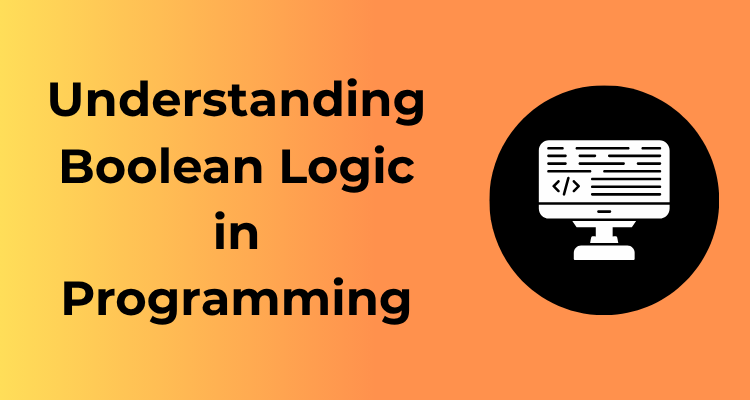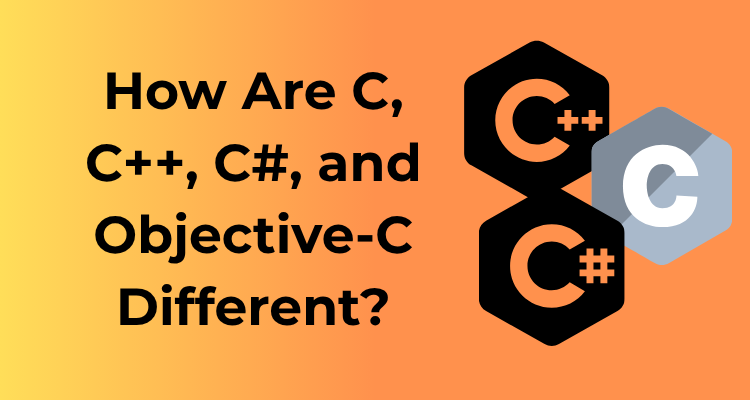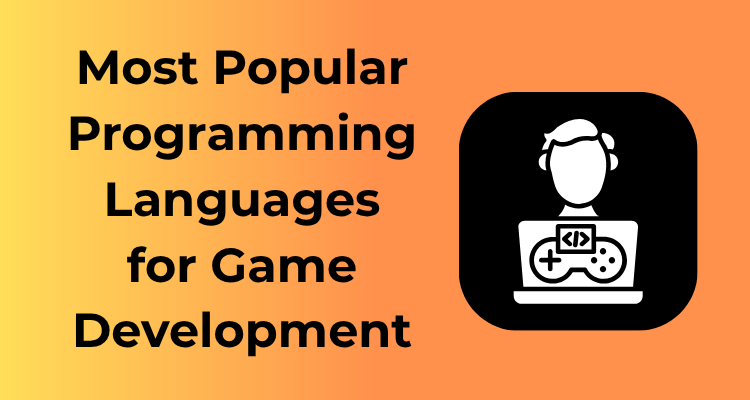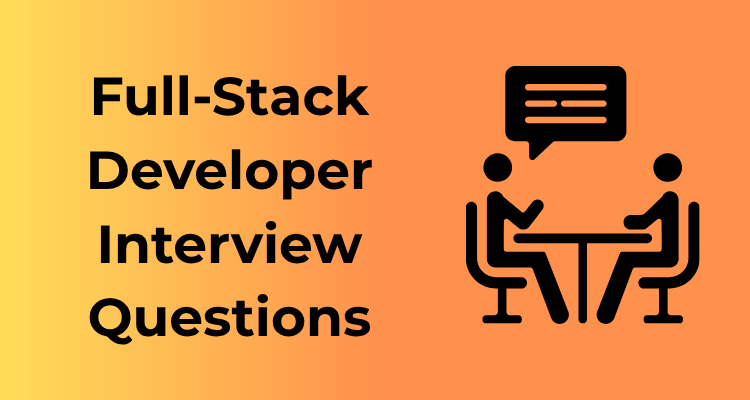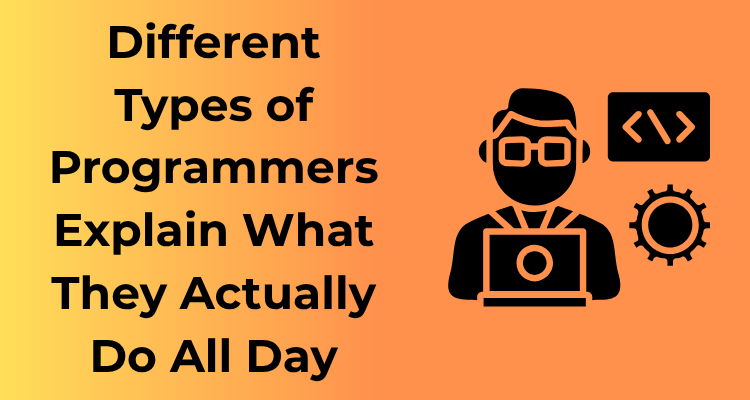Hello! Welcome to the intriguing realm of Boolean logic. This fundamental part of computer science and mathematics plays a key role in how systems, algorithms, and programs function. Whether you’re a coding newbie or brushing up on your skills, understanding Boolean logic is a vital first step. Let’s break it down into digestible pieces so it doesn’t feel overwhelming!
What is Boolean Logic?
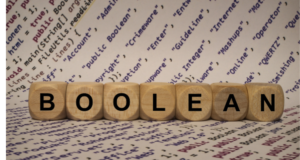
Named after George Boole, a 19th-century mathematician, Boolean logic is essentially the backbone of decision-making in computing. At its core, Boolean logic deals with true and false values, often referred to as binary states. It’s that simple! Think of it as a system of yes or no answers for machines. Computers, after all, love simplicity, and Boolean logic is their language for making sense of the world.
So, when you’re working with Boolean expressions, you’re evaluating conditions to see if they result in “true” or “false.” Doesn’t sound too bad, right?
Why Is Boolean Logic Important?
- Simplifies Decisions: Boolean logic enables programs to make choices based on conditions. For example, if you want to check whether a user is logged in, that’s a straightforward true/false question.
- Forms the Basis of Control Flow: It dictates how programs make decisions and execute particular lines of code. Without Boolean logic, you wouldn’t have constructs like
ifstatements, loops, or branches. - Speaks Directly to Hardware: On a deeper level, Boolean principles are hardwired into circuits and gates inside your computer. Every digital device processes zeros and ones using Boolean algebra!
How Does Boolean Logic Work?
Let’s take it step by step. Boolean logic runs on these core concepts: Truth Values and the evaluation of conditions. Here’s a quick analogy:
- Imagine you’re deciding what to wear based on the weather. If it’s raining, take an umbrella. If it’s sunny, wear sunglasses. These are conditional statements, and the idea behind them is pure Boolean logic.
- In programming, we write expressions like:
is_raining = True if is_raining: print("Take an umbrella!")This evaluates whether
is_rainingis true. If yes, you grab the umbrella. If not, you skip it.
Boolean Operators: A Sneak Peek
To truly understand Boolean logic, you need to get familiar with some key players known as Boolean operators:
- AND: Ensures multiple conditions are true.
- OR: Checks if at least one condition is true.
- NOT: Reverses the truth value of a condition.
And, Or, Not: The Core Building Blocks of Boolean Expressions
Welcome to the heart of Boolean logic! If Boolean expressions were a delicious pizza, AND, OR, and NOT would be the cheese, sauce, and crust. These operators are the foundation of everything you do in Boolean logic, and understanding them is like having the keys to unlock endless logical possibilities. So, let’s dig in and savor their power!
Understanding the Operators
- AND: This operator means that all conditions being checked must be true. Think of it like needing both your house key and your car key to be in your pocket before you leave the house—both must be present.
- OR: With OR, only one condition needs to be true for the expression to evaluate as true. Imagine you’re choosing dinner: you’ll order pizza or pasta. If either is available, you’re happy!
- NOT: This one flips things around—it inverts the truth. If something is true, NOT makes it false, and vice versa. Think of it like seeing “No Entry” on a door—NOT reverses what you’d expect: it’s a signal to stop.
Where Do These Operators Show Up?
Boolean operators shine in programming, database filters, search engines, and even everyday tech use. Here’s a little breakdown to make their role crystal clear:
- AND is often used to narrow results. For example, in coding,
if (age > 18 && hasLicense)ensures both conditions—being over 18 and having a license—must be true before someone can drive. - OR helps broaden possibilities. For instance, a search query like “pets OR animals” will return results for either “pets”, “animals”, or both.
- NOT is the ultimate rule breaker. Imagine you’re shopping online, but you don’t want red shoes. You’d filter your search by saying, “shoes NOT red.”
Why These Operators Matter
The beauty of AND, OR, and NOT comes from their simplicity. These tools let us model decision-making logically and systematically. They allow us to create rules, narrow down possibilities, or exclude options with precision. Much of what we do with technology today—like finding information, writing programs, or even solving puzzles—relies on their effective use.
Pro Tips for Mastering the Basics
- Think in True/False Terms: Remember, Boolean logic works like a light switch: it’s either on (true) or off (false). Keeping this binary concept in mind helps you evaluate expressions without overthinking them.
- Combine with Confidence: Don’t hesitate to mix AND, OR, and NOT as you grow more comfortable. However, always use parentheses to clarify the order of operations, just like in math!
- Test as You Go: If you’re experimenting with these operators in programming, test small chunks of your Boolean logic first. This ensures everything is working as expected before building on it.
Real-Life Scenarios: Applying Boolean Expressions in Everyday Programming
Boolean expressions may sound like a daunting concept reserved for programmers with thick glasses and endless lines of code on their screens. But here’s the thing—they’re part of the everyday toolkit that makes our digital world spin! Let’s explore how Boolean expressions come into play in real-world programming with relatable examples and simple explanations.
1. Filtering and Searching Data
Ever typed a search like “coffee shops AND open late” into your favorite app or website? Guess what? That’s Boolean logic at work! In programming, Boolean expressions are used to filter and organize data efficiently. By combining AND, OR, and NOT operators, developers help users zero in on exactly what they need.
For instance, imagine you’re programming an e-commerce site. Users might want “red” AND “cotton” clothing. Here, the logic ensures results only show items meeting both criteria, sparing shoppers the frustration of sifting through unrelated options. Boolean expressions make this kind of magic happen behind the scenes.
2. Deciding Program Flow
Programs often need to decide between different actions based on specific conditions, and Boolean expressions are the guiding stars here. Let’s say you’re programming a fitness app that provides coaching. Here’s an example:
if (userIsLoggedIn AND workoutIsCompleted) {
show("Congratulations! You’ve hit your goals for the day.");
} else {
show("Keep it up! Complete your workout to see progress.");
}
This snippet illustrates how Boolean expressions allow your app to behave differently depending on whether both userIsLoggedIn and workoutIsCompleted are true. Clever, right?
3. Validating Inputs
Another key area Boolean expressions shine? Input validation. Imagine you’re designing forms for a website—whether it’s a sign-up page, a payment gateway, or a survey, Boolean logic ensures data integrity by checking multiple conditions. Here’s an example:
if (emailFieldIsNotEmpty AND passwordIsNotEmpty AND passwordLength > 6) {
processForm();
} else {
showError("Please complete all fields and ensure the password is strong enough.");
}
The logic here ensures that the user doesn’t proceed unless all conditions are met, helping maintain a smooth experience while catching potential user errors early.
4. Game Logic and Interactions

Let’s switch gears to something more fun: video games! Pick any game you’ve played—Boolean expressions are working hard under the hood. If you’ve ever unlocked a door in a game only to realize you needed both the key AND the code, you’ve encountered Boolean logic in action.
if (playerHasKey AND playerKnowsCode) {
unlockDoor();
} else {
showHint("Find the key and the code to open this door!");
}
Boolean expressions ensure games are both responsive and challenging, making them a critical part of game programming.
5. Real-Time Notifications
Many apps send you alerts—“There’s rain tomorrow, bring an umbrella!” or “You’ve hit your step goal for today!” Behind the scenes, Boolean expressions check whether specific conditions are true, triggering notifications only when they matter to you. Without this efficient conditional logic, apps would be sending you irrelevant updates all day long!
Complex Logic: Combining Operators for Advanced Expressions
If you’re ready to flex your logical muscles and escalate your Boolean game, let’s dive into the exciting world of complex Boolean logic. When situations or programming scenarios demand intricate decision-making, combining Boolean operators like AND, OR, and NOT becomes essential. Let’s decode this seemingly complex world, one step at a time!
What Does “Complex” Mean in Boolean Logic?
To put it simply, a Boolean expression becomes complex when it involves multiple operators and conditions all working together. Picture it like solving a puzzle: each piece (operator) adds up to make the final logical result. These expressions help computers (and humans!) make accurate decisions based on multiple inputs.
For example: Imagine you’re validating a user’s input on a website where they need to be logged in AND accept terms of service OR have admin privileges to access a specific resource. Sounds a bit tricky, right? That’s where combining operators shines!
The Building Blocks: Parentheses Are Your Best Friend
First things first: when you’re working with combined operators, parentheses help you organize and clarify your logic. Just like in math, parentheses dictate the order in which operations happen. Without them, your expression could easily end up doing something completely unintended.
Let’s break it down with an example:
(condition A AND condition B) OR condition C
This means condition A and condition B must both be true *together*, OR condition C can be true independently to pass the logic test. The parentheses ensure the proper grouping and prevent unpredictable outcomes.
Combining Operators: Practical Examples
Now that we’re on the same page about parentheses, let’s see complex Boolean logic in action:
- E-commerce Example: Suppose you want to apply a discount if a user is either a new customer or a premium member AND they’ve added more than 5 items to their cart. You’d write:
(isNewCustomer OR isPremiumMember) AND cartItemCount > 5. - Game Development: Let’s say an action in a game can only happen if a player has a magic key AND is not invisible OR their skill level is above 50:
(hasMagicKey AND NOT isInvisible) OR skillLevel > 50. - Job Portals: A candidate qualifies if they have at least 5 years of experience AND either a specific degree OR key certifications:
experience >= 5 AND (hasDegree OR hasCertifications).
Testing Your Logic: Why It’s Crucial
When your expressions get complex, they’re more vulnerable to errors. Always test them with different inputs to make sure the output matches your intention. A small logical mistake like missing a NOT keyword or forgetting proper grouping can turn into a debugging nightmare.
Pro tip: Use truth tables when you’re stuck! A truth table helps you systematically work through all possible outcomes of your Boolean expression so you can ensure accuracy.
Keep It Neat and Simple
While crafting complex logic may sound thrilling, always aim for that delicate balance between clarity and precision. Overloading an expression with unnecessary conditions can make it harder for you (and others!) to debug later. If your logic starts looking unwieldy, consider splitting it into smaller, reusable functions or statements.
Simplifying Boolean Algebra: Tips and Tricks for Efficiency
If the mention of “Boolean algebra” conjures up memories of dry mathematics lessons, it’s time to change that perception! Boolean algebra doesn’t have to be an intimidating concept—it’s a powerful tool, and with a few tips and tricks, you can simplify your expressions and become a more efficient problem-solver. Let’s dive in!
Cut Out the Middlemen: Utilize Boolean Identities
Boolean identities are like shortcuts—they help you clean up and simplify expressions. Let’s look at some common ones:
- Identity Law: Anything OR’d with
falsestays the same (e.g., A ORfalse= A), and anything AND’d withtruealso stays the same (e.g., A ANDtrue= A). - Null Law: Anything OR’d with
trueis alwaystrue(e.g., A ORtrue=true), and anything AND’d withfalseis alwaysfalse. - Idempotent Law: A OR A is just A, and A AND A is also just A. No need for repetition!
- Complement Laws: Combining something with its opposite cancels it out (e.g., A AND
notA =false).
Get these basics nailed down, and you’ll instantly find it easier to simplify Boolean expressions without tearing your hair out!
Group Smarter, Not Harder
Another great tip is leveraging grouping. If you’re combining multiple Boolean statements, think about how parentheses can help you organize the logic flow. For instance:
(A AND B) OR (A AND C) = A AND (B OR C)
By grouping and factoring expressions, you reduce complexity and make it easier to interpret the logic. This isn’t just about neatness—it’s also a game-changer for debugging larger programs down the road.
Minimize with De Morgan’s Laws
These laws are like a magician’s secret weapon for Boolean algebra. They allow you to transform a complicated NOT-ridden expression into something far simpler and easier to test. Here’s how they work:
- The NOT of an AND expression equals the OR of the NOTs:
NOT (A AND B) = (NOT A) OR (NOT B) - The NOT of an OR expression equals the AND of the NOTs:
NOT (A OR B) = (NOT A) AND (NOT B)
These come in handy when dealing with nested logic or when you’re trying to reduce code duplication. Memorize them, and you’ll thank yourself every time you clean up a messy conditional!
Use Truth Tables for Clarity
Struggling to wrap your head around whether your simplifications are correct? Enter the trusty truth table. It’s like a safety net for Boolean algebra. Here’s how it works:
- List all possible combinations of inputs (e.g.,
true/falsefor A and B). - Calculate the truth values step-by-step for your expression.
- Compare the original and simplified expressions—if the outputs match, you’re good to go!
Truth tables might feel old-school, but they’re often the clearest way to verify your logic when things get complex.
Keep It Human-Friendly
Finally, remember that code is read as much as (if not more than!) it is written. A simpler Boolean expression is not just faster for computers—it’s also scannable by your future self or your teammates. So, whenever you write Boolean expressions, ask yourself:
“Could I explain this to someone else in a sentence or two?”
If the answer feels messy, take another pass at simplifying. And trust us—the world of readability will thank you!
Debugging Boolean Expressions: Common Mistakes to Watch For
Ah, Boolean expressions. They’re the unsung heroes of decision-making in programming, enabling our code to navigate through choices like a logical ninja. But let’s face it: debugging Boolean expressions can sometimes feel like solving a frustratingly tricky puzzle. Don’t worry though—I’m here to guide you through some of the common pitfalls coders face and how to tackle them like a pro!
1. Parentheses: Don’t Leave Logic to Chance!
If there’s one mistake that even seasoned programmers make, it’s forgetting to use parentheses to clarify the order of operations. Just like in math, Boolean expressions follow a set order. Neglecting parentheses can quickly throw things into chaos.
Example:
if (A || B && C)
This translates differently than what you might expect. The “&&” operator takes precedence over “||,” creating confusion in the logic. Instead, spell it out:
if ((A || B) && C)
Be explicit. Parentheses are your friends—they make your intentions crystal clear and save you hours of debugging.
2. Typos: The Silent Logic Killers
One rogue typo, and your perfectly logical expression can lead you down a rabbit hole. This could be as subtle as misplacing a comparison operator (= vs. ==) or accidentally using the wrong variable name. Let me say it: always double-check your spelling before raging at your code!
Pro Tip: Use code editors with syntax highlighting. Modern IDEs often underline mismatches, helping you catch these sneaky errors early on.
3. Misunderstanding Truthy and Falsy Values
Here’s a classic “gotcha” moment: not all values behave like true or false in Boolean contexts. For example, in some languages, an empty string (“”), zero (0), or null/undefined can evaluate as “falsy” even if you didn’t explicitly tell them to.
- What to do: Always test your assumptions. If you’re expecting a binary true/false, ensure that’s exactly what you’re working with. You can use explicit comparison operators to confirm:
if (myVariable === true) {
// Works more reliably
}
4. Overly Complex Logic
If your Boolean expression is starting to look like the ingredients list for rocket fuel, it might be time to refactor. Complex expressions with multiple conditions can become hard to read and even harder to debug.
Break it down: Use helper variables to simplify. For instance, instead of:
if (A > 5 && B != null && (C || D))
Break it into something more readable:
let isValidA = (A > 5);
let hasValidB = (B != null);
let hasSelection = (C || D);
if (isValidA && hasValidB && hasSelection) {
// Much clearer!
}
5. Overlooking Edge Cases
Lastly, don’t underestimate edge cases. Test your Boolean expressions against unexpected inputs. Think about scenarios like empty lists, null values, or maximum/minimum boundaries. Real-world conditions are often unpredictable—prepare your logic accordingly!
Exploring Industry Uses: Boolean Logic in Software and Beyond
Boolean logic is not just a cool concept in computer science—it’s an indispensable cornerstone in practically every industry that relies on technology. From the clever algorithms running behind the scenes of your favorite apps to the intricate systems steering global enterprises, Boolean expressions play a starring role. But don’t worry—no dry textbooks here! Let’s unravel how Boolean logic shines in real-world applications across industries.
1. Software Development: The Heart of Boolean Magic
It’s no secret that Boolean logic is a foundational element in software development. In fact, you’d be hard-pressed to find a single line of code in any programming language that doesn’t lean on these principles!
For example, consider conditional statements. Ever wonder how your favorite e-commerce app decides to show you a discount banner when you’re logged in but not if you’re browsing anonymously? That decision hinges on Boolean expressions! A snippet like this drives such features:
if (isLoggedIn && isEligibleForDiscount) {
displayDiscountBanner();
}Boolean logic helps software teams create intelligent, responsive systems that cater to user needs in a flash. Cool, right?
2. Search Engines: Fine-Tuned Results
Ever Googled something and marveled at how accurate the results are? You can thank Boolean logic for that! Search engines are big fans of operators like AND, OR, and NOT.
When you type “best hiking trails NOT crowded”, the search engine uses Boolean expressions to exclude results about popular and crowded trails while focusing on the serene ones you’re looking for. Without this logical finesse, search engines wouldn’t be half as efficient or as useful.
3. Data Analysis and Big Data
In the enterprise world, Boolean logic is a VIP in the realm of big data analysis. Imagine a data analyst at a retail company who wants to filter customers fitting specific demographics:
(age >= 25 AND age <= 40) AND (purchasedLast6Months = true)This query uses Boolean expressions to pinpoint a target audience for marketing campaigns. It slices and dices mountains of data into meaningful chunks, helping businesses make informed decisions.
4. Machine Learning and AI
If you’ve ever marveled at an AI assistant recognizing your voice or a recommendation engine suggesting eerily accurate products, you’ve witnessed Boolean logic in action. Artificial intelligence systems rely on Boolean expressions to perform classifications, process complex rules, and determine whether various conditions are true or false during decision-making processes.
For example, when an AI-based chatbot recommends a solution to a customer query, it’s likely evaluating multiple Boolean expressions to select the best response in a split second.
5. Outside Software: Hardware and Beyond
Boolean logic doesn’t live only in the digital world—it’s deeply entrenched in hardware design too. In fact, it’s the very foundation of how electronic circuits and processors work. Logical gates, like AND, OR, and NOT, are constructed using Boolean expressions to carry out tasks ranging from simple calculations to running an entire operating system.
Beyond computing, Boolean concepts also power control systems in automation, like those running your smart thermostat or guiding autonomous vehicles. Sensors and systems process Boolean inputs (e.g., “temperature < desiredTemp”) to take actions like turning the heater on or keeping the brakes engaged. Pretty neat, huh?
6. Gaming: A Creative Playground for Booleans
Finally, let’s not forget about gaming—it’s where Boolean logic gets to flex some creative muscle! Behind the scenes of every level-up, enemy encounter, or treasure discovery in your favorite game are Boolean expressions determining if and when things happen. Whether it’s ensuring that a character only survives a jump while holding a special item or keeping enemies at bay when you’re low on health, Boolean logic creates immersive, lifelike interactions. Imagine your favorite games without it—boring, right?

